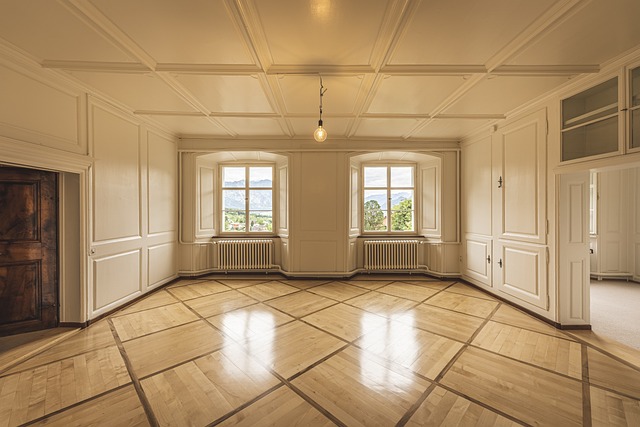Clutter in your closet can create mental clutter. Just like a messy space can weigh on your mood, a cluttered wardrobe can affect how you feel when getting dressed and how you approach your day. In this post, we’ll explore how decluttering your closet can not only simplify your wardrobe but also refresh your mind, boosting productivity, and enhancing mental clarity.
📚 Suggested Post Structure:
1. The Psychological Benefits of a Clean Closet
- Explain the connection between physical space and mental well-being.
- Discuss how living in a cluttered environment can contribute to stress, overwhelm, and even decision fatigue.
- Introduce the concept of “wardrobe wellness” — the idea that a tidy, intentional closet can positively affect your mood, confidence, and productivity.
2. Set Clear Goals for Decluttering
- Encourage readers to set specific, realistic goals for their wardrobe overhaul.
- Example Goal 1: “I will clear out 20 items this weekend.”
- Example Goal 2: “I will create a system for organizing my closet that works for me.”
- Emphasize that decluttering doesn’t mean getting rid of everything, but rather curating pieces that fit their lifestyle and make them feel good.
3. Start with a Clean Slate: Take Everything Out
- Recommend emptying out the entire closet, dresser, or storage bins to see what’s really inside.
- Suggest sorting items by category (e.g., tops, bottoms, shoes, accessories) to make the process more manageable.
- Tip: Create “keep,” “donate,” and “discard” piles. Items in poor condition that can’t be donated should go straight to the trash.
4. The “Try-On” Method: Does It Spark Joy?
- Encourage readers to try on clothes they’re unsure about. This is inspired by the famous Marie Kondo method, but with a focus on how items make you feel.
- Ask questions like:
- “Does this piece still fit my body and lifestyle?”
- “Do I love wearing this item?”
- “Does this piece reflect who I am now?”
- Explain that it’s not about keeping things out of guilt or obligation but about keeping what truly serves you.
5. Evaluate Your Wardrobe’s Functionality
- Help readers assess whether their closet is functional and if each item fits their current needs.
- Example: Do you have enough work clothes for your professional life? Are there enough casual or comfortable outfits for weekends?
- Encourage them to look for gaps in their wardrobe (e.g., do they need a new pair of black jeans or a classic blazer?) and use this as an opportunity to build a more versatile and functional collection.
6. The 30-Day Rule: Let Go of Clothes You Haven’t Worn
- Introduce the 30-day rule: if you haven’t worn an item in the past month, it might be time to let it go.
- Encourage readers to take a closer look at clothes that are only worn once or twice a year. These items take up valuable space but don’t serve a practical purpose.
- Offer a twist: Instead of just donating or discarding items, suggest that they try to sell clothes they no longer need for extra cash or donate them to a cause they care about.
7. Create a System That Works for You
- Suggest different organizational methods, such as:
- Color-Coding: Makes finding clothes easier and adds a sense of order.
- Categorizing by Season: Keep only the current season’s clothes accessible; store off-season clothes neatly.
- Hanging vs. Folding: Depending on fabric types, choose whether to hang or fold clothes for better accessibility.
- Storage Solutions: Use baskets, bins, or drawer dividers for accessories, scarves, shoes, and smaller items.
- Encourage readers to adopt a simple, easy-to-maintain system based on their personal needs.
8. Revisit Your Wardrobe Regularly
- Advise readers to revisit their wardrobe every few months to ensure it still aligns with their lifestyle and needs. It doesn’t have to be a big, stressful event each time—just a quick check-in to keep things fresh.
- Tip: Schedule wardrobe maintenance every season as a ritual to keep clutter in check and stay mindful of what you own.
9. Practice Mindful Shopping After Decluttering
- Discuss the importance of being intentional with future purchases. Once you’ve decluttered, it’s a great opportunity to reassess what you need in your wardrobe.
- Suggest creating a “shopping list” for new items instead of buying impulsively. This can help avoid future clutter and ensure any additions to the wardrobe are purposeful.
- Mention the “one-in-one-out rule”: For every new item, donate or discard one piece to maintain a balanced closet.
10. Celebrate Your Success and Reap the Benefits
- Remind readers that decluttering isn’t just about getting rid of things; it’s about making space for the things that truly make them happy and reflect their current style.
- Highlight the emotional and mental rewards: reduced stress, easier mornings, clearer mindset, and even improved self-image.
- Encourage them to celebrate their success by enjoying a more organized, functional closet that brings joy and peace of mind.

